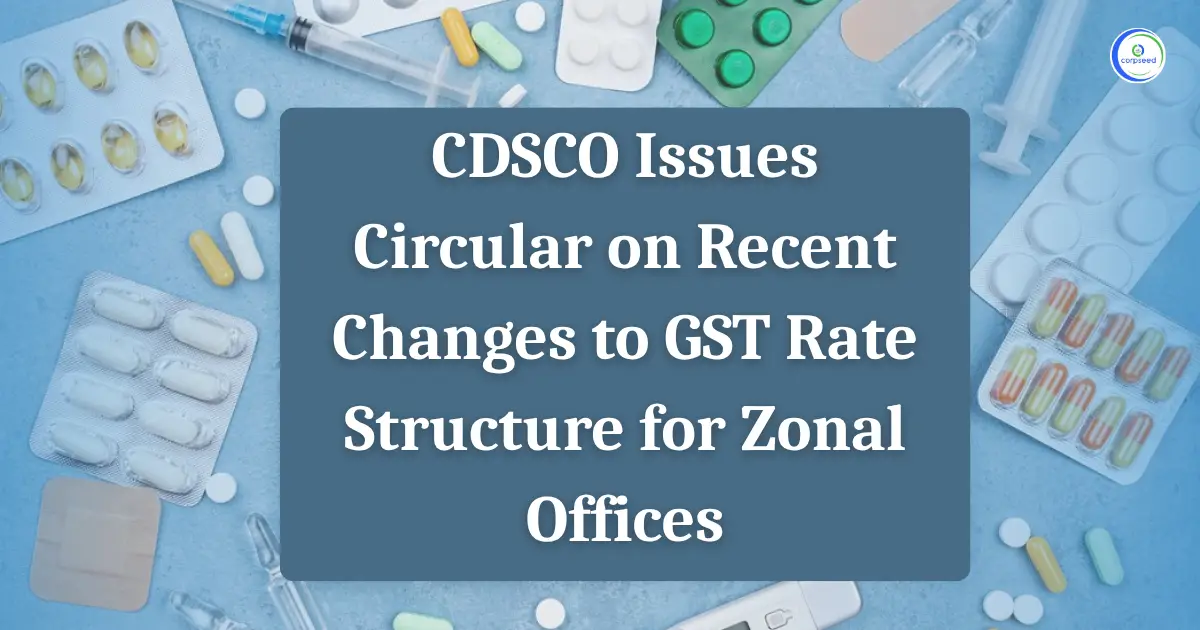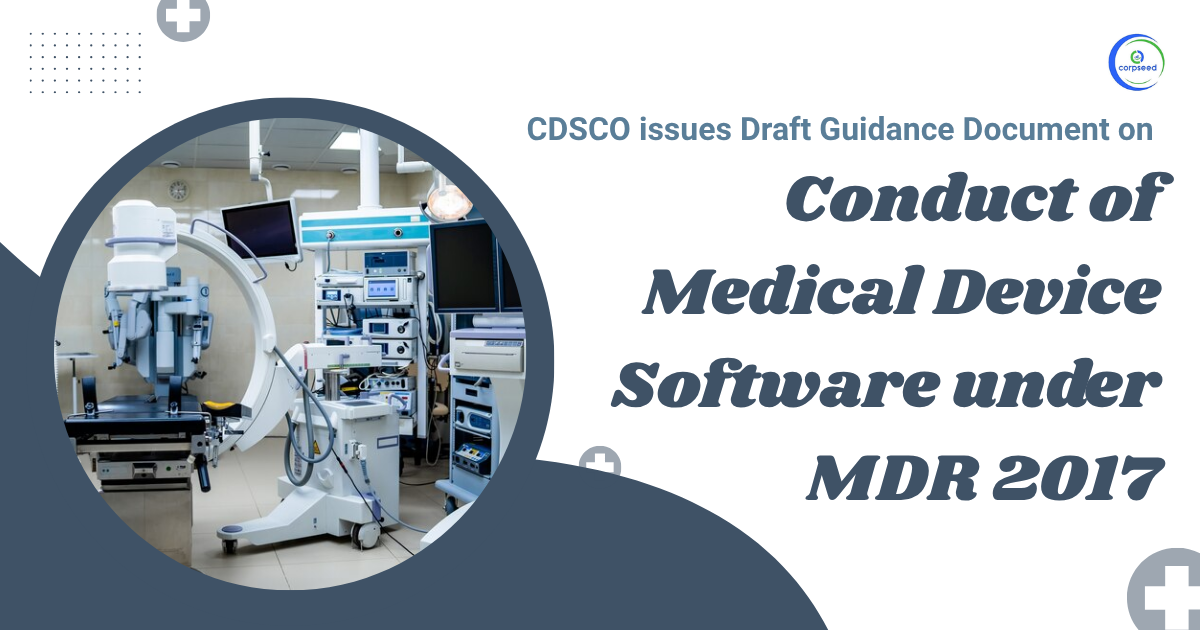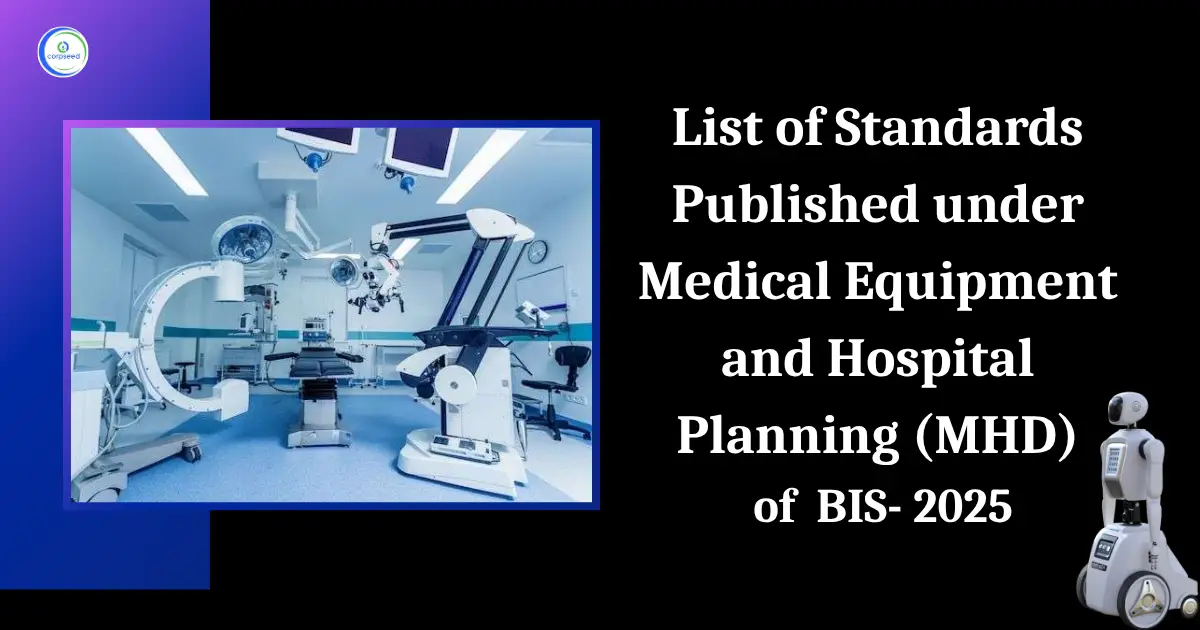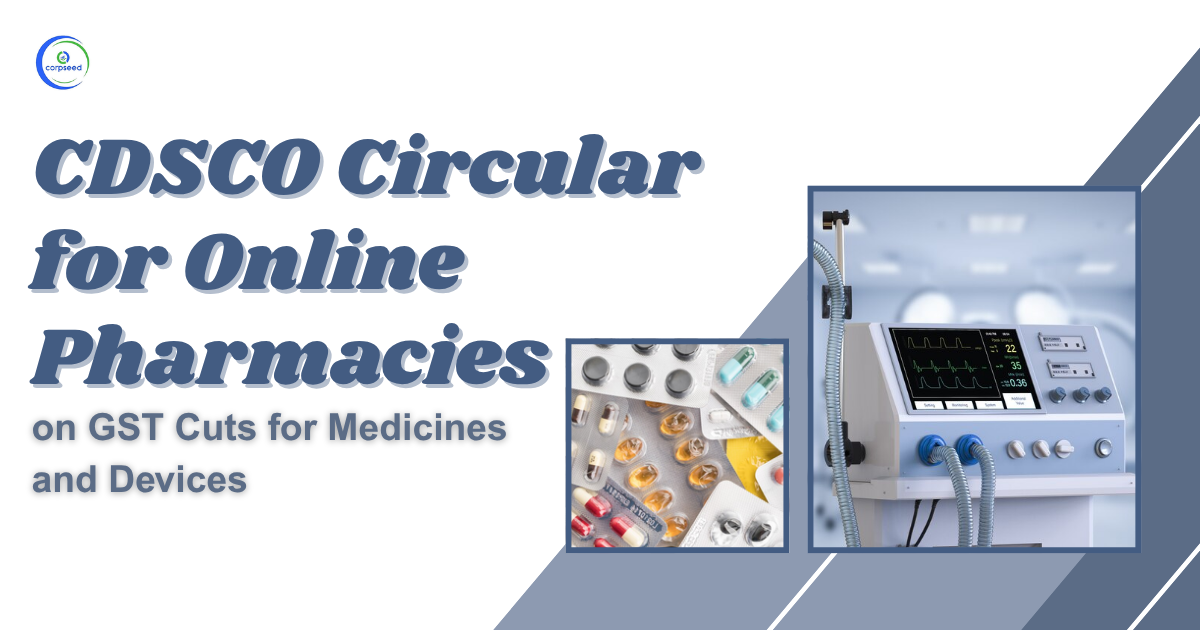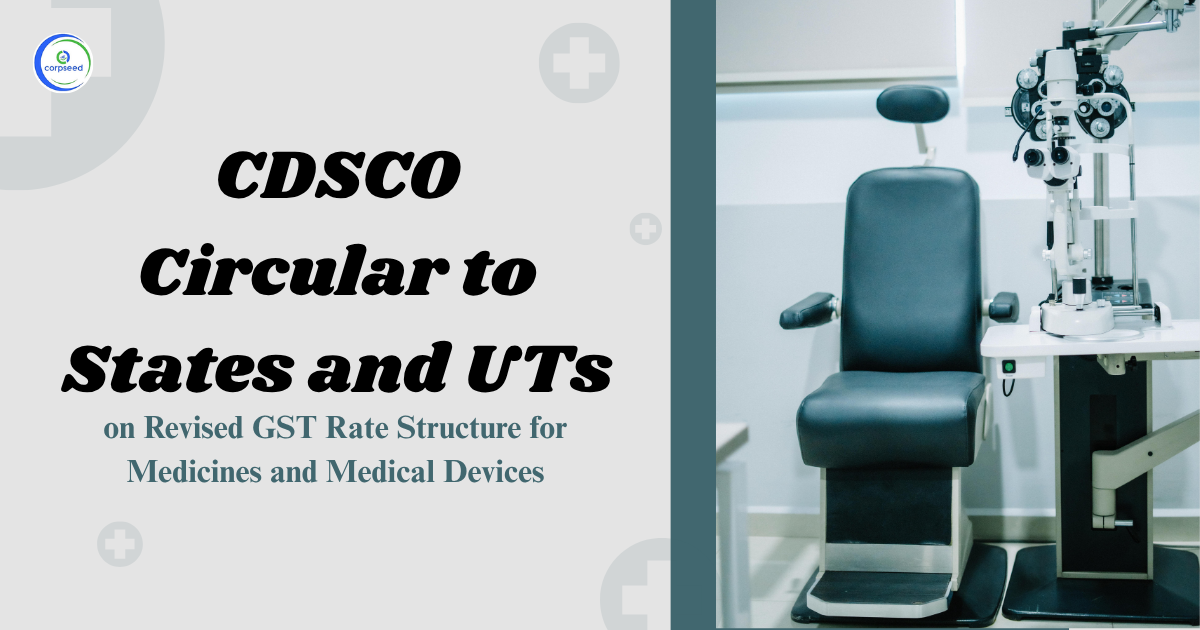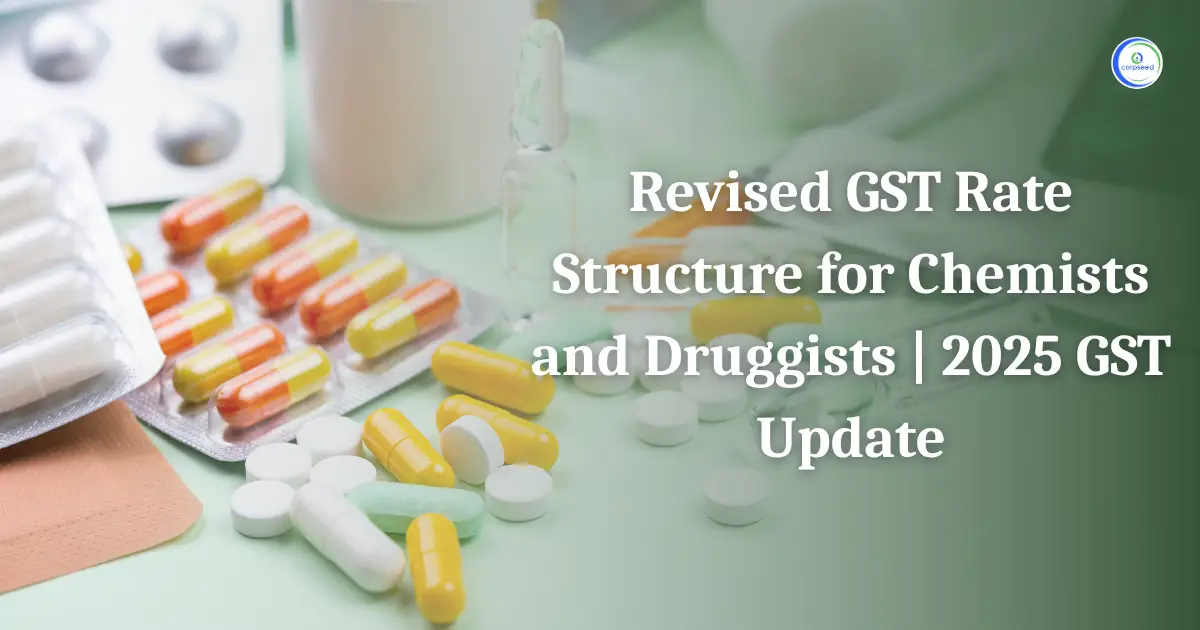The Central Drugs Standard Control Organization (CDSCO) has recently issued a circular to all its Zonal and Sub-Zonal Offices. It concerns the implementation of the revised GST rate structure for medicines, medical devices, and related healthcare products.
Table of Contents
This update follows the government’s decision to rationalize GST rates, effective from 22 September 2025. The circular directs CDSCO regional offices to ensure that the new tax rates are applied across the pharmaceutical and medical device sectors without delay.
It also emphasizes regulatory coordination, consumer protection, and consistent compliance across India. The goal is to make the transition smooth for both the industry and the end users.
Understanding the Circular
The circular is a regulatory communication aimed at ensuring seamless implementation of GST rate changes. It calls for uniform interpretation of the new structure and consistent action across CDSCO’s zonal network.
In simple terms, the government has revised the GST on certain drugs and medical devices, reducing the rate for many essential products from 12% to 5%. This adjustment aims to make life-saving medicines and healthcare products more affordable for consumers.
However, any change in tax rate affects multiple layers of the supply chain, from manufacturers and importers to distributors and retailers. The CDSCO circular ensures that every entity involved in the production and distribution of drugs and medical devices adheres to the new tax norms without disrupting supply or violating labeling requirements.
--------------Blog Contact Form-------------
Regulatory Importance of the Circular
The CDSCO is India’s national drug regulatory authority under the Ministry of Health and Family Welfare. Its role goes far beyond issuing licenses. It ensures compliance, standardization, and public safety across the pharmaceutical and medical device sectors.
This circular is more than just an administrative update. It serves as a key regulatory tool to:
- Keep pricing transparent in the pharmaceutical and medical device markets.
- Ensure consistent labeling and proper MRP adjustments based on the revised GST rates.
- Monitor whether manufacturers, importers, and marketers are meeting implementation timelines.
- Prevent non-compliance or profiteering, making sure consumers benefit from the tax reduction.
By sending the circular to all Zonal and Sub-Zonal Offices, the CDSCO ensures accountability at every level. These regional offices act as the first line of enforcement, connecting the central directive to state-level implementation and supporting smooth compliance nationwide.
Key Changes Highlighted in the Circular
The CDSCO circular highlights critical updates for implementing revised GST rates, covering tax revisions, MRP labeling changes, expedited regulatory approvals, and coordination with state authorities to ensure nationwide compliance and transparency.
- Revision of GST Rates: The most significant change is the reduction of GST on select medicines, formulations, and medical devices. The rate cut, in several cases from 12% to 5% is designed to reduce the final retail price for consumers and strengthen access to affordable healthcare.
- Revised Labelling and MRP Guidelines: The circular reinforces that all manufacturers and importers must update their Maximum Retail Prices (MRP) to reflect the revised GST.
- The old and new MRPs must both be visible on packaging to maintain price transparency.
- Companies are permitted to re-sticker or stamp revised MRPs on existing stock, provided that the new label does not obscure the original one.
- The deadline for using old packaging material has been set till 31 December 2025, or until existing stock is exhausted.
- Expedited Regulatory Approvals: The CDSCO has instructed its Zonal and Sub-Zonal Offices to fast-track approvals for restickering and labelling changes.
Given the volume of products affected by the revised GST rates, the circular ensures that state and regional regulators work proactively to process industry requests. This step reduces administrative delays and helps maintain product availability across markets.
- Coordination with State Drug Authorities: The circular calls for close coordination between CDSCO regional offices and State Drug Control Departments.
This cooperation is critical for synchronizing compliance checks, especially for products already in circulation before the new GST rate came into effect. Both central and state regulators are expected to monitor relabelling and pricing to prevent discrepancies.
Impact on Stakeholders
The circular affects manufacturers, importers, distributors, retailers, and regulators, ensuring compliance, transparent pricing, and smooth implementation of revised GST rates.
For Manufacturers and Importers
Manufacturers and importers must immediately adjust their pricing systems, ERP modules, and labeling operations. They are responsible for:
- Updating MRPs based on revised GST.
- Applying new labels or stickers as per guidelines.
- Ensuring that any price reduction due to lower tax is passed on to consumers.
The change requires operational readiness. Factories must manage old stock carefully and ensure compliance during audits. Any delay or oversight could invite penalties or regulatory action.
For Distributors and Retailers
Distributors and wholesalers play a key role in executing the new pricing structure at the ground level. They must ensure that revised MRPs are reflected in all invoices and displayed correctly in the retail system.
Retailers, including online pharmacies, are required to sell products only at revised MRPs post-implementation. They must maintain proper records to demonstrate compliance during inspections.
For Regulatory Authorities
Zonal and Sub-Zonal Offices of CDSCO serve as compliance anchors. Their responsibilities include:
- Supervising re-labelling and MRP re-stickering operations.
- Monitoring that old stock is cleared in line with deadlines.
- Verifying that the revised GST rates are reflected accurately in product documentation and approvals.
- Reporting any cases of non-compliance or profiteering to the central office.
The circular empowers these regional units to coordinate closely with both industry stakeholders and state regulators, ensuring nationwide consistency in implementation.
For Consumers
The end-user is expected to benefit directly from this change. The reduced GST rate should lead to lower MRPs on essential medicines and devices.
Transparent pricing, visible dual MRPs, and strict oversight by CDSCO are designed to protect consumer interests and build confidence in regulatory processes.
Also Read: Revised GST Rate Structure for Chemists and Druggists | 2025 GST Update
Broader Implications for the Healthcare Sector
The revision of GST rates, along with the CDSCO circular, reflects a clear and strong policy direction. It combines fiscal reform with the goal of public health improvement.
By lowering tax rates, the government aims to make medicines and medical devices more affordable for everyone. But affordability alone is not enough. Proper regulatory discipline is equally important. The CDSCO circular ensures that tax changes are implemented correctly on the ground and prevents misuse or price manipulation.
This move also strengthens India’s commitment to “One Nation, One Tax, One Compliance Framework,” linking economic reform with patient welfare.
The circular highlights the importance of timely and clear communication. It helps manufacturers, importers, and distributors avoid confusion, manage inventory efficiently, and comply with the new GST rates during the transition.
Conclusion
The CDSCO circular on the revised GST rate structure is a key regulatory milestone. It ensures that the government’s tax changes are implemented smoothly across the pharmaceutical and medical device sectors. By promoting transparency, compliance, and coordination, the circular helps manufacturers, distributors, and regulators align their operations with the new GST rates. Consumers benefit from more affordable healthcare products, while the industry receives clear guidance to adjust pricing and labeling. Overall, the circular demonstrates how effective regulation can bridge policy and practice, turning a tax revision into meaningful improvements for India’s healthcare ecosystem.
This portion of the site is for informational purposes only. The content is not legal advice. The statements and opinions are the expression of author, not corpseed, and have not been evaluated by corpseed for accuracy, completeness, or changes in the law.
BOOK A FREE CONSULTATION
Get help from an experienced legal adviser. Schedule your consultation at a time that works for you and it's absolutely FREE.
